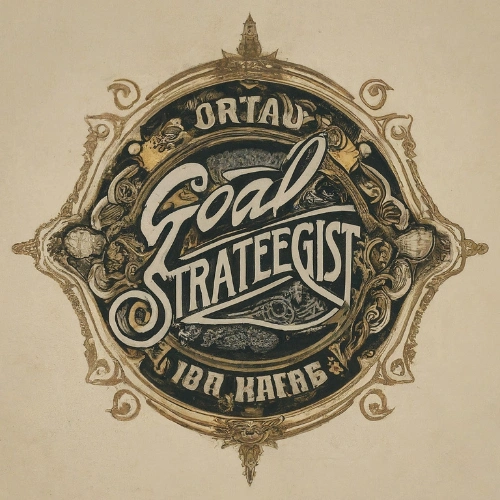Project goals are the North Star for any successful venture. They shape the journey, influencing every decision and action. As you set these objectives, you’re not just charting a course; you’re cultivating a project culture that resonates with purpose and direction.
Understanding the impact of well-defined goals can revolutionize your project management approach. They foster a sense of unity and drive, ensuring that your team’s efforts are synchronized and focused on delivering results that matter.
Embracing clear goals can mean the difference between a thriving project culture and one that struggles to find its footing. Dive into how setting the right targets shapes the heart of your project’s environment and steers management strategies toward success.
Importance of Project Goals
Project goals are the compass that navigates your team through the chaotic waters of project management. They’re not just milestones to hit; they embody the vision and direction of your entire project. Imagine embarking on a journey without a destination. That’s a project without goals – aimless and bound to fail.
Without clear goals, it’s nearly impossible to measure success or identify when to pivot strategies. Every project demands a unique approach, and goals are the defining elements that customize your management style. They mold your team’s methods, sharpen focus, and fuel motivation.
Consider the impact of well-crafted goals on team dynamics. Goals serve as a rallying point, creating a sense of camaraderie among team members. They align personal ambitions with the project’s objectives, forging a stronger bond and a united front. This alignment is particularly crucial when obstacles crop up. United by common goals, your team’s resilience is fortified, enabling them to overcome challenges collectively.
Moreover, goals provide the metrics for accountability and progress tracking. In project management, you’re often juggling resources, timelines, and scope. Goals act as the checkpoints to ensure you’re not veering off track. They shoulder the responsibility of keeping everyone, from stakeholders to team members, in sync with the project’s pulse.
Furthermore, goals influence your resource allocation. They help to determine where to invest time, money, and personnel. Prioritizing goals sets a clear roadmap for resource distribution, ensuring that each aspect of the project gets the attention it deserves. With defined goals, you’re equipped to make informed decisions, minimize waste, and optimize efficiency, propelling the project towards a successful outcome.
Emphasizing goals is essential, but remember to make them SMART: Specific, Measurable, Achievable, Relevant, and Time-bound. This framework establishes the foundation for goals that are not only clear and attainable but also measurable and timely. By adopting SMART goals, you transform abstract ideas into concrete targets that can be strategically tackled and achieved.
How Project Goals Shape Project Culture
Project goals profoundly influence the cultural framework of a project. When your team clearly understands the objectives, you’ll notice a sense of shared purpose takes root. This unity is pivotal to developing a resilient project culture, one that’s equipped to weather uncertainties and maintain morale even when the going gets tough.
Think of project goals as the DNA of project culture. They dictate how team members communicate, make decisions, and resolve conflicts. Goals that emphasize innovation encourage creativity and risk-taking. When goals prioritize deadlines and efficiency, a culture of punctuality and hard work evolves.
The ripple effect of well-established goals touches every aspect of project culture:
- Communication Styles: Open and regular communication is fostered to keep everyone aligned to the goals.
- Decision-Making: Goal-oriented decision-making guides team members to prioritize tasks that align with the desired outcomes.
- Collaboration: With everyone working towards a common end, you’ll find collaboration improves, as all efforts are concerted towards shared goals.
Transparency in goals not only clarifies responsibilities but also creates an environment of trust. As team members understand what’s expected of them and how their work contributes to the broader objectives, they become more engaged and invested in their roles within the project.
Strategies and practices within the project management sphere should also reflect the goals. If flexibility and adaptability are part of your goals, your management style may be more fluid, with an agile approach taking precedence. On the other hand, if precision and accuracy are paramount, a more structured method, such as waterfall project management, may be ideal.
In sum, your project goals don’t just guide you towards successful completion; they’re the architects of your project’s environment. With the right goals, you can cultivate a culture that not only embraces the project vision but also thrives on the collective commitment to achieving it.
Creating Clear and Defined Project Goals
Understanding the significance of setting clear and defined project goals can be the turning point in your project’s trajectory. It’s your roadmap, your North Star, guiding every aspect from initiation to closure. To get started, you need to involve all key stakeholders in the goal-setting process. Communication is key; when everyone’s on the same page, consensus on what the project aims to achieve becomes much easier to establish.
SMART goals are your best bet for success. This acronym stands for Specific, Measurable, Achievable, Relevant, and Time-bound. Let’s break it down:
- Specific: Goals must be clear and specific so that you know exactly what you’re working towards.
- Measurable: You must be able to track your progress and measure outcomes.
- Achievable: Goals should stretch your capabilities but remain possible.
- Relevant: They should align with broader business objectives.
- Time-bound: Establish a deadline to create a sense of urgency and focus.
Setting SMART goals encourages a structured approach to project management. They provide a clear vision and foster a culture of accountability within your team. This can significantly reduce the likelihood of scope creep — a notorious project management challenge.
Once established, continually refer back to your goals during the project lifecycle. This reinforces their importance and keeps the team centered on the final objectives. You’ll also want to ensure that your project management tools and systems are set up to reflect and track these goals, which will enable you to make data-driven decisions that steer your project towards desired outcomes.
Remember, well-defined goals are not set in stone; flexibility is important. As your project unfolds, you may need to adjust your goals to reflect changes in scope, resources, or external factors. Regularly reviewing and updating goals ensures that your project stays relevant and on track.
By establishing and adhering to clear project goals, you lay the groundwork for a strong project culture that values clarity, collaboration, and continuous improvement. Your team’s ability to meet challenges head-on is amplified, and the overall project management process is streamlined for efficiency and effectiveness.
The Impact of Project Goals on Management Strategies
When you’re knee-deep in project management, one crucial element that dictates the success of your approach is how project goals influence the strategies you devise and implement. The goals you establish act as a guiding compass for decision-making, ensuring that every strategy aligns with the end game.
Project goals shape resource allocation, as they help you prioritize tasks and distribute resources efficiently. This becomes particularly important in projects with tight budgets or limited manpower. By understanding the project’s priorities, you not only allocate resources effectively but also mitigate the risk of overspending or overcommitting.
Leveraging Goals to Fine-Tune Risk Management
Project goals also have a significant impact on risk management strategies. A clear set of goals provides a benchmark against which potential risks can be weighed. You’ll find that you’re better equipped to identify which uncertainties might derail the project’s success and proactively develop mitigation plans.
Synchronizing Team Through Goal-Oriented Leadership
Moreover, defined project goals have a transformative effect on leadership styles. Leaders become facilitators of goal accomplishment, fostering a culture of accountability and empowerment. They adapt their management tactics based on the needs and milestones of the project, advocating for a cohesive team dynamic that is laser-focused on reaching project objectives.
Continuous Improvement Driven by Goals
Continuous improvement is integral to any project culture, and it’s directly tied to the project goals you set. These goals encourage managers to constantly evaluate and refine processes. By measuring outcomes against the project’s objectives, you learn from each phase and adapt your management strategies for increased efficiency and effectiveness in real time.
Tracking the right metrics is another aspect where project goals define management strategies. You’ll find that Key Performance Indicators (KPIs) are chosen based on their relevance to the goals. This focused approach to monitoring performance ensures that your project stays on the path to success, and that every team member knows exactly what success looks like.
Remember, well-defined project goals don’t just influence management strategies; they drive them. Whether it’s resource distribution, risk mitigation, leadership, or performance measurement, your goals are at the heart of every decision and action taken. Keep your goals in clear sight, and watch as your management strategies evolve to not just meet, but exceed, those objectives.
Aligning Team Efforts with Project Goals
When you’re diving into a project, understanding how project goals affect every individual’s effort is crucial. Clear project objectives create a unified focus, ensuring that every team member is pulling in the same direction. Alignment is not just about assigning tasks; it’s about ensuring that those tasks synchronize seamlessly with the overarching mission of the project.
To achieve this harmony within your team:
- Communicate goals effectively and consistently.
- Simplify complex objectives into manageable tasks.
- Relate individual contributions to the bigger picture.
Team alignment starts with transparent communication. You’ll want to make sure everyone on your team knows not just what they’re working on, but also why it’s important. Regular meetings and updates keep project goals fresh in everyone’s mind, fostering a sense of purpose and direction.
Let’s break down complex project goals into achievable tasks. By doing so, you empower team members to take ownership of their role within a project. Break tasks down with clarity, and watch as your team members find innovative ways to tackle challenges, displaying creativity and initiative that align with project objectives.
Understanding the individual contributions to the larger goals can boost morale and productivity. When team members see how their work impacts the project, they feel more valued and invested. Connect day-to-day activities to long-term achievements to reinforce this link.
In managing the dynamics of team efforts in relation to project goals, consider:
- Encouraging cross-functional collaboration.
- Providing resources and tools aligned with goals.
- Recognizing contributions that directly support the project objectives.
By fostering an environment where cross-functional collaboration is the norm, you create a fertile ground for innovative problem-solving and idea-sharing that directly relates to project goals. Ensuring that the right resources and tools are available reinforces the importance of the project’s objectives. Don’t forget to recognize and reward efforts that contribute significantly to the goals. This not only validates the team member’s work but also reinforces the behaviors and actions that you want to see repeated in the future.
All in all, aligning team efforts with project goals is about creating a synergistic atmosphere where each task, each role, and each decision propels the project toward success.
Conclusion
Recognizing how project goals mold your project’s culture and management approach is crucial. They’re not just milestones to hit; they’re the heartbeat of your team’s drive and direction. When you align your management strategies with these goals you’re setting the stage for a culture rooted in accountability and empowerment. By breaking down complex objectives and fostering a collaborative environment you’re not just managing a project—you’re leading a mission. Embrace the power of well-defined goals to create a ripple effect of efficiency and success across your project. Remember every task you undertake and every decision you make is a step towards turning those goals into your team’s shared reality.


Leave a Reply